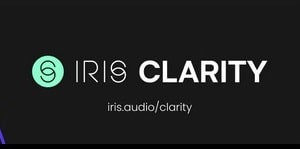Your customers can’t hear you. That’s probably not good for your contact centre nor our customers
IRIS recently surveyed 1,000 people about their contact centre customer service calling habits, and the results were unmistakable.

The headline was this: customers still regularly use the phone for customer service — especially for crucial conversations — but background noise at both ends of the call is a major obstacle to achieving positive outcomes.
This echoes what their previous study of 500 contact centre agents suggested: your customers can’t hear you, and unsurprisingly, this is causing issues. IRIS have explored this further, find out more below.
 Customers still love calls
Customers still love calls
100% of the people we asked still use the phone at least some of the time when contacting customer service. Of those, 54% reserve it for the most important conversations, and 27% prefer phone calls above all other methods.
Think of it this way: if your call experience isn’t perfect, you’re providing a negative experience to all of your customers at least some of the time, to half of your customers at their most desperate and stressful times, and to over a quarter of them every time they need your help. Ouch.
Your call centre is the VIP channel for your company. Whilst your FAQs, bots, and live chats are good enough to handle forgotten passwords and simple queries, it’s your phone lines that customers go to for the biggest issues and questions. That makes voice a premium you cannot ignore, especially when customers are likely at their most stressed or most primed for an upgrade.
Yet our research shows audio is still a big pain point…
 Contact centres are noisy places — and the customers can hear it
Contact centres are noisy places — and the customers can hear it
We asked 1,000 customers several questions about their experience on the phone with call centres and the results were clear — whatever contact centres are currently doing to reduce background noise is failing, and customers are fed up.
We asked the respondents if they’ve ever been on a call with a customer service agent where it was hard to hear them because of noise around them such as ringing phones or other agents talking — a massive 77% responded that they had been. This has led to 86% of respondents having to ask agents to repeat themselves.
How much does this matter? Well, your customer experience — and therefore CSAT score — takes a hit, with excessive background noise on the agent’s end rated the second biggest annoyance (58%) for customers contacting customer service. In fact, 42% of customers said they had actually hung up immediately due to call centre background noise.
When you consider the potential loss of customers or leads due to background noise, and the increased time to resolution caused by repetition, it’s easy to see how costs can rack up for the average call centre. And that’s before you even consider the background noise on the customer’s end of the call.
 Customers lives are also noisy
Customers lives are also noisy
As we’ve just seen, the impact of noise in your call centre is a frightening prospect — but at least this is something you can control. Noise at the customer’s end of the call, however, is an entirely different story — and our study showed it’s just as damaging to customer call outcomes.
74% of customers we surveyed said they had been on a call where the agent struggled to hear them due to background noise around them, leading to 87% needing to repeat themselves in order for the agent to hear key details. This isn’t too surprising, since roughly a third of respondents shared they had taken customer service calls on public transport, on the street, in the office, whilst socialising, and when shopping. None of these are optimal locations for an important call — but problems requiring customer service don’t tend to happen at quiet, opportune moments. Even when they do, long waiting times often lead to customers moving around or multitasking, which bring in more background noise than desired.
Regardless of who instigated the call, customers listed background noise around themselves (37%) as the third most annoying aspect of customer service calls and 59% said they even ended a call early because they were in a loud location. If you’d hoped the phonetic alphabet might come to the rescue you’d be surprised and sometimes appalled at some of the alternatives used — they ranged from useless and confusing to downright bizarre.
So between noise in call centres that businesses have tried and failed to control and noise around customers that are near impossible to control, what can we do to ensure customer requests are properly heard and addressed?
The four sources of sound
On every call, sound affects four separate areas that each require a different solution. These are:
1. The sound your agent can hear from their end of the call
2. The sound your customer can hear from their end of the call
3. The sound your agent can hear from the customer’s end of the call
4. The sound your customer can hear from the agent’s side of the call
The first source can be fixed with the typical methods known to the industry for years: high-quality noise cancelling headphones, sound-absorbing partitions, and further spacing between agents. These all help agents hear less of the typical noise centre cacophony.
The second source depends entirely on where customer issues arise and how urgently they need to contact customer service. It’s hard to control this, though if the issue isn’t time sensitive, the customer can ideally plan a more appropriate time and location to call or make use of scheduled callback requests.
The final two sources of noise are the key culprits behind the statistics above, causing issues such as increased call handling times, poorer resolution rates, lower customer satisfaction scores, and negative agent experiences. It’s this noise that the industry has yet to properly grasp and resolve.
The solution is voice isolation software (such as IRIS Clarity). Voice isolation tools utilise AI to identify the ‘noise’ on any call and remove it, leaving nothing but clear speech. It’s bi-directional, which means it removes noise on both the agent’s end for the customer, as well as on the customer’s end for the agent. The outcome: an engaged conversation that flows.
A big problem with an easy, scalable solution
As we’ve established, background noise on both ends of a call is a serious issue for customers and agents alike, which makes it a serious issue for your call centre business. It impacts bottom line KPIs such as average call handling time and time to resolution, and affects the overall CX of all your customers who use the phone to contact you (which, according to our survey, is all of them at some point in time).
Luckily, the solutions are simple and can easily be integrated into your current systems. Once installed, toggle voice isolation on for both sides of the call, and focus on what’s most important: the conversation and the query at hand.
So what are you waiting for? Even a few seconds saved per call can make a huge difference to all parties — and especially to your contact centre and your business.
![]()
 IRIS Clarity is an AI-powered software solution that removes distracting background noise from your VoIP and customer calls.
IRIS Clarity is an AI-powered software solution that removes distracting background noise from your VoIP and customer calls.
Real-time and bi-directional, IRIS Clarity allows participants on both sides of a call to immediately enjoy clearer sound, no matter where they are. IRIS Clarity improves focus, engagement, and wellbeing, bringing control to otherwise uncontrollable environments.
For additional information on IRIS Clarity visit their Website



